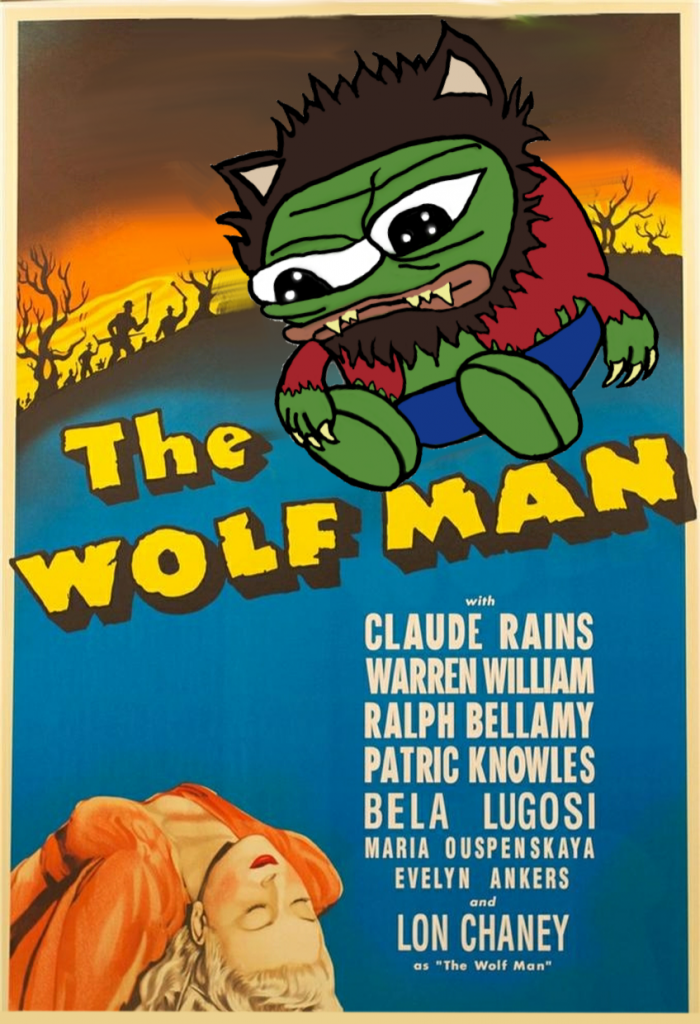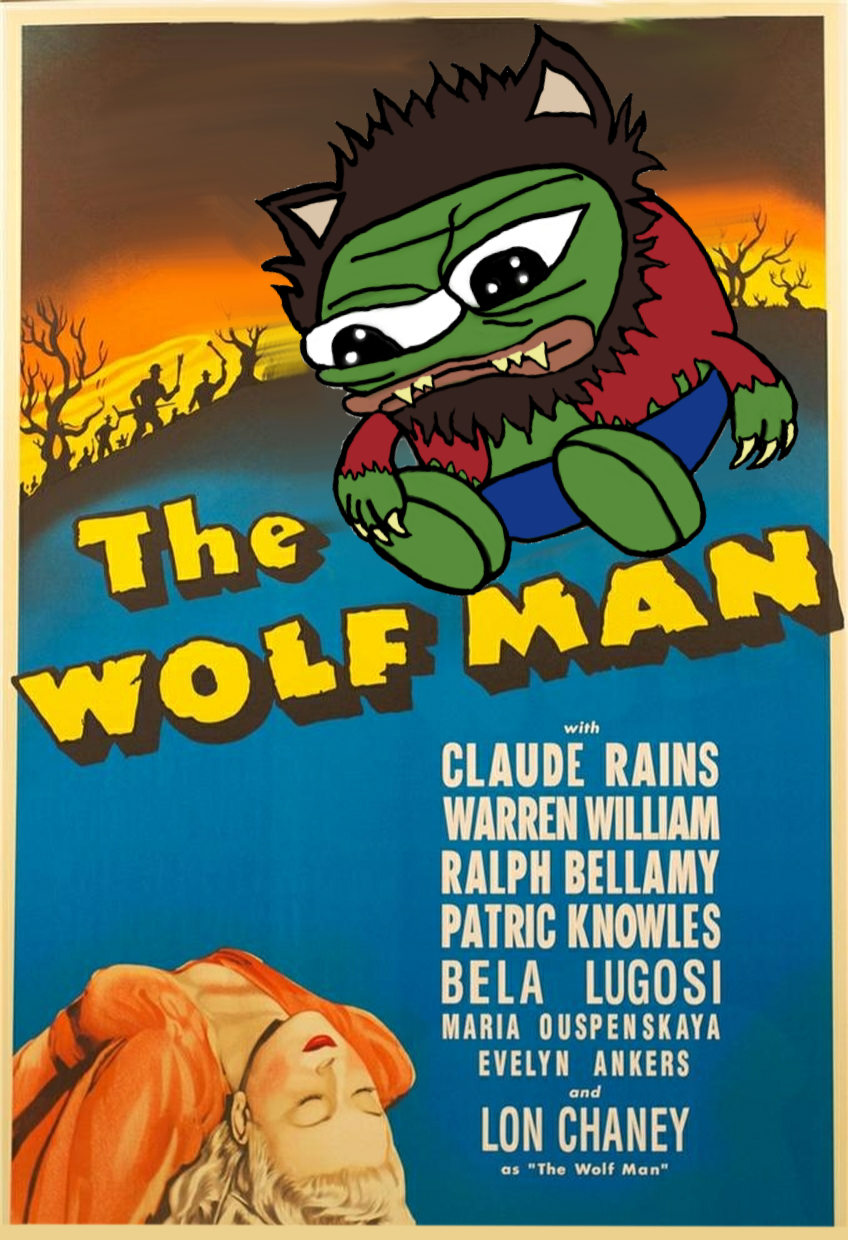Recently, I penned a small article letting frens know how they can survive an encounter with a vampire. Sadly, vampires are not the only ghoulies that are known to prey on the innocent during the Halloween season. Werewolves, or humans who have been cursed to transform into wolves, can also be found hiding in shadowy places and on lonesome country roads. Although they are part human, werewolves are no less malevolent or dangerous. These monsters have razor-sharp teeth, powerful claws, and the speed and strength of super-wolves. Encountering a werewolf can be a death sentence unless you are prepared to properly defend yourself. Let this article be your guide for anti-werewolf self-defense.

Belief in werewolves, or the belief in human-animals hybrids animated by the supernatural, transcends time and cultures. The Navajo of the American Southwest famously believe in skinwalkers, or witches who can use the dark arts to turn themselves into coyotes and other fearsome predators. The cultures of Northeast Asia famously have a shared tradition of “fox spirits,” from the Japanese kitsune to the Korean kumiho. These evil trickster spirits are ancient foxes with nine tails and immortality. In order to hurt humans (especially men), these fox spirits take on the form of beautiful women. Once lured into the fox spirit’s trap, unlucky men are torn apart and left as mutilated remnants.
Werewolves, however, are a uniquely European phenomenon in origin, with most legends coming from the Northwest. Many academics have posited different explanations for the emergence of the werewolf, but one common theme stems from the berserkr warriors of ancient Scandinavia. These warriors went into battle nude except for a bearskin draped across their head and shoulders. These soldiers, who were equally ferocious in battle and undisciplined, believed that they were possessed by the spirits of bears and other predators in order to fully worship their chief deity, Odin. The historical prevalence of bear and warrior cults in Indo-European history is a topic worthy of further discussion, but outside the purview of this small essay. Suffice it to say that early Europeans saw in animals like bears and wolves an example of battle fury and strength.
By the time of the Middle Ages, wolves were generally hated creatures because of the threat of attacks. These were no idle threats; in the 15th century, some forty Parisians were killed by a roving band of wolves that managed to enter the city. Such attacks happened elsewhere, such as in Sweden, Russia, and the Holy Roman Empire. Much later, between 1765 and 1767, a mysterious, wolf-like creature killed over one hundred people in the Gévaudan region of France. According to legend, the creature was only killed when a local farmer, Jean Chastel, shot it with a silver bullet.
The lore around werewolves finally coalesced in Hollywood, of all places. Thanks to a screenplay by Curt Siodmak, 1941’s The Wolf Man starring Lon Chaney, Jr. and Claude Rains established the idea that a full moon is what transforms a man into a wolf. The film, as well as earlier literature and the 1935 movie, Werewolf of London, also stipulated that one becomes a werewolf only after being bitten by another werewolf. In European traditions, men usually became werewolves through diabolism, otherwise known as satanic witchcraft. Take for instance the case of Gilles Garnier, a suspected werewolf and serial killer of16th century France. During his confession, which likely came after intensive torture, Garnier claimed that he became a werewolf after a demon gave him an ointment to rub on his skin. Across the border, during the age of mass religious violence between Protestants and Catholics in the Holy Roman Empire, multiple serial killers like Peter Stumpp and others were accused of being black magicians and werewolves who feasted on the flesh of their many victims. If you would like to learn more about the links between occultism and serial murder, I suggest you read the book Programmed to Kill by David McGowan.
Now, in order for you, a normal, God-fearing fren, to survive an attack from one of these evil beasts, you must do the following:
- Always carry something with silver — most people believe that werewolves are best killed by a silver bullet. The only issue with this is that silver is a terrible metal for bullets. It is heavy and unwieldly, and unless you plan on shooting a werewolf close-up, a silver bullet will not do too much good. However, making balloon bombs full of silver nitrate is a good idea, plus carrying around a silver dagger cannot hurt.
- Have wolf’s bane handy — wolf’s bane, also known as monkshood, is a type of poisonous flower of the buttercup family. Werewolves absolutely hate this flower, and you can keep yourself safe if you throw some wolf’s bane into their eyes, or if you decorate your house with the flower. Be careful: wolf’s bane can be just as harmful to you as any werewolf.
- Look for the signs — Do you suspect someone of being a werewolf? If so, then you need to gather concrete proof. Evidence of lycanthropy include hairy palms, a noticeable unibrow, an unnatural thirst and hunger, and a preference for risky behaviors. Once armed with these facts, you can have the suspected werewolf arrested (after all, werewolves tend to be criminals anyway).
- Use traditional weapons — If arresting the werewolf is not an option, then I suggest taking care of them when they are not in wolf form. When a werewolf is human, they have all the weaknesses of you and I, and therefore can be dispatched with a bullet, blade, or well-aimed judo chop! And remember: a werewolf’s body must be burned. If it is not, then Slavic folklore dictates that the werewolf’s corpse will rise again, but this time as a vampire!
I hope you found this article helpful and enlightening. Stay tuned for the next one, which will discuss the terrible topic of demons and demonology!

A friend of mine has all the signs! Especially the hairy palms….
I thought he was just jerking off to much but now I’ll be watching!
Thanks for the info.
Some great tips to protect ourselves. Big time thx.
In latvian folklore werewolves are called in 2 interchangeable names – Vilkatis/Vilkacis and second one has meaning towards “wolfeyes”. Werewolves are also called dogs of God/Dieva suņi. This is not the christian god but sort of all-father figure from baltic pantheon. Dievs sends out his dogs to hunt evil witches and sorcerers.
There is a good werewolf story from my hometown described in a book called “Courland’s werewolf stories”about a hunter prowling a forest near old sacred/cursed oak called Draņķozols and he meets a werewolf. Wolfman speaks in his mind and shows him vision of how humanity is destroying the mother earth and he feels the primal anger. Then wolf dissapears in the forest. This story happened sometime in the 80’s when were still occupied by soviet union. Werewolves here are usually described like the werewolves from skyrim if that makes any sense. My country has many stories of werewolves.